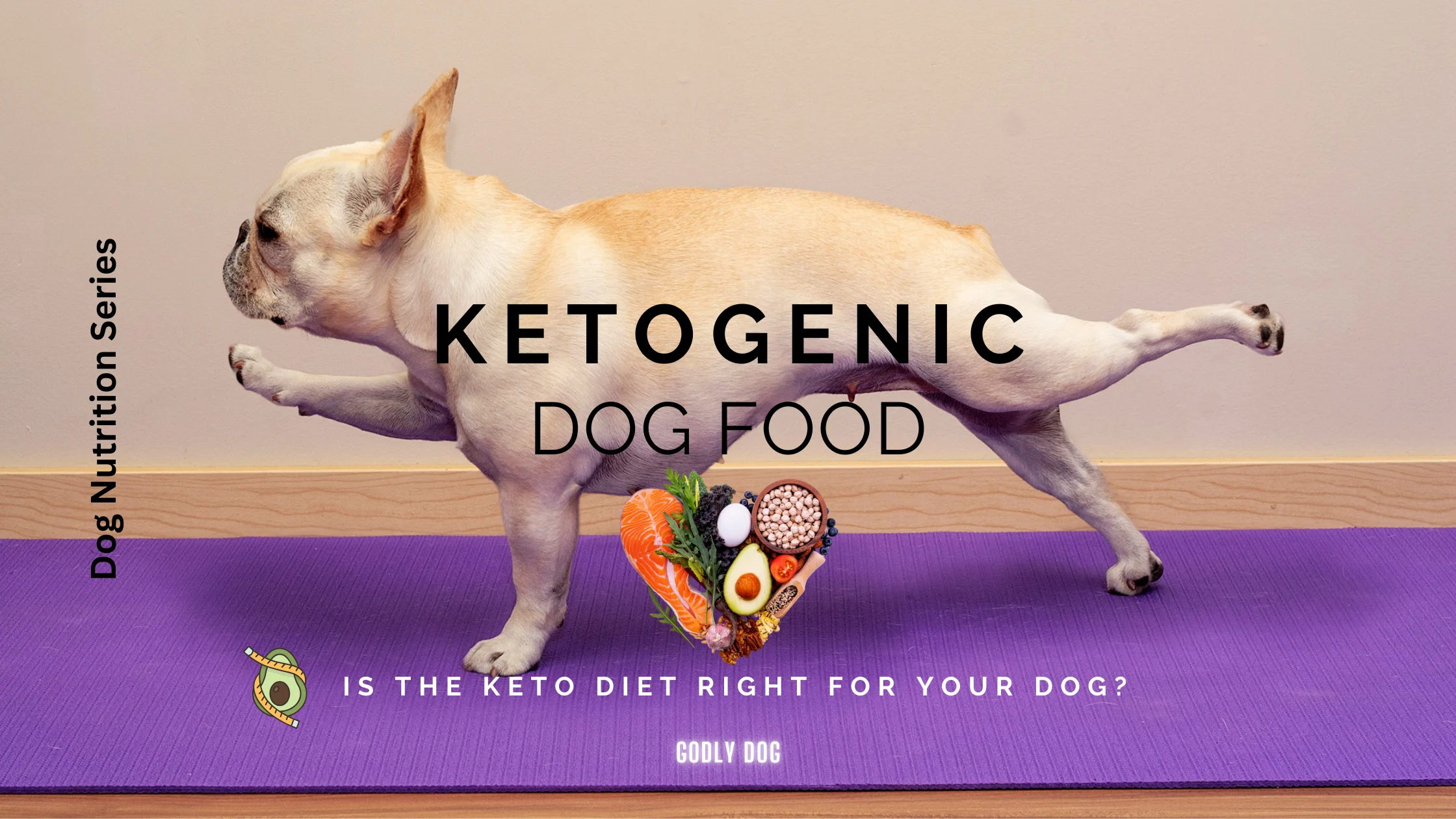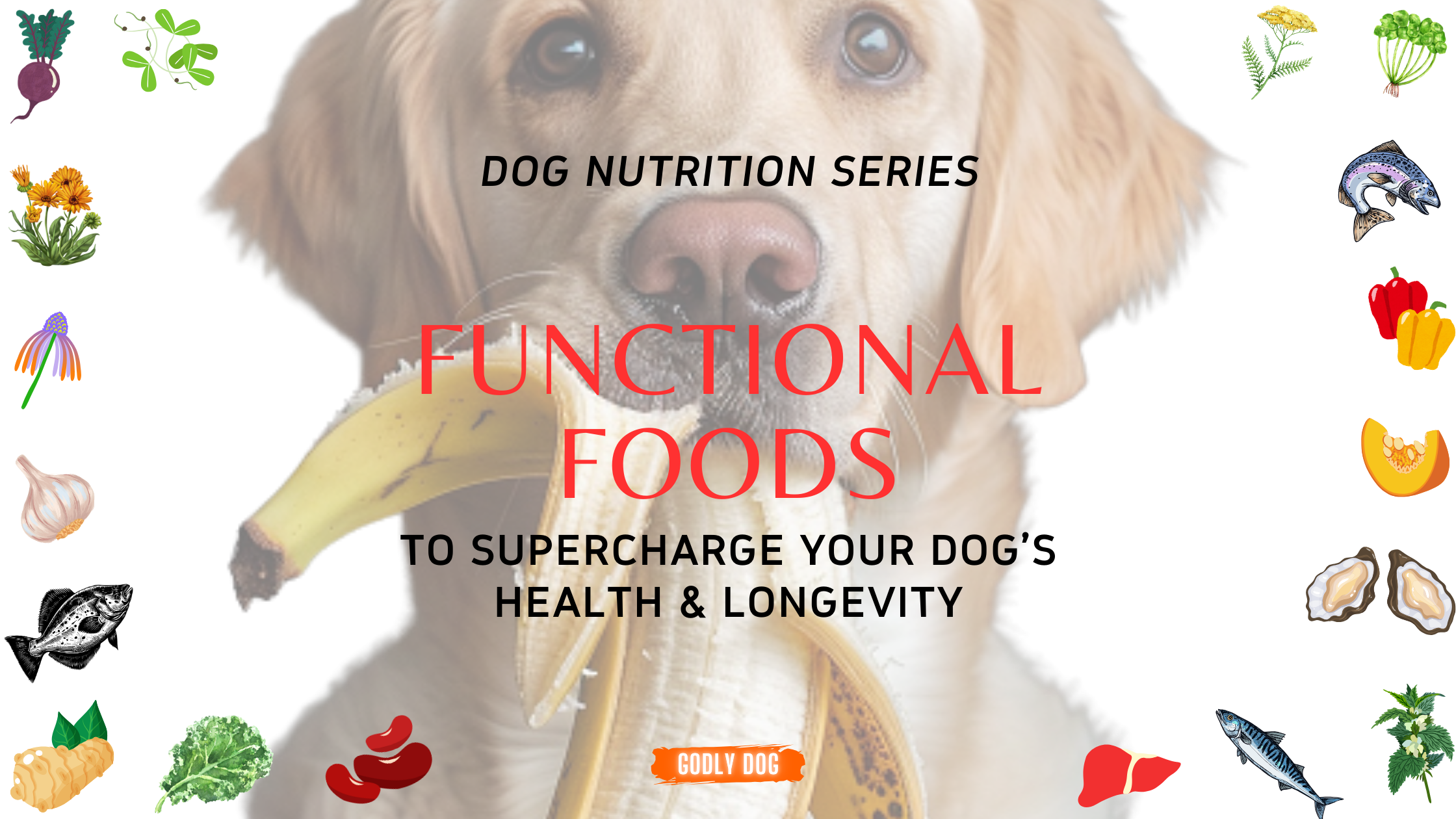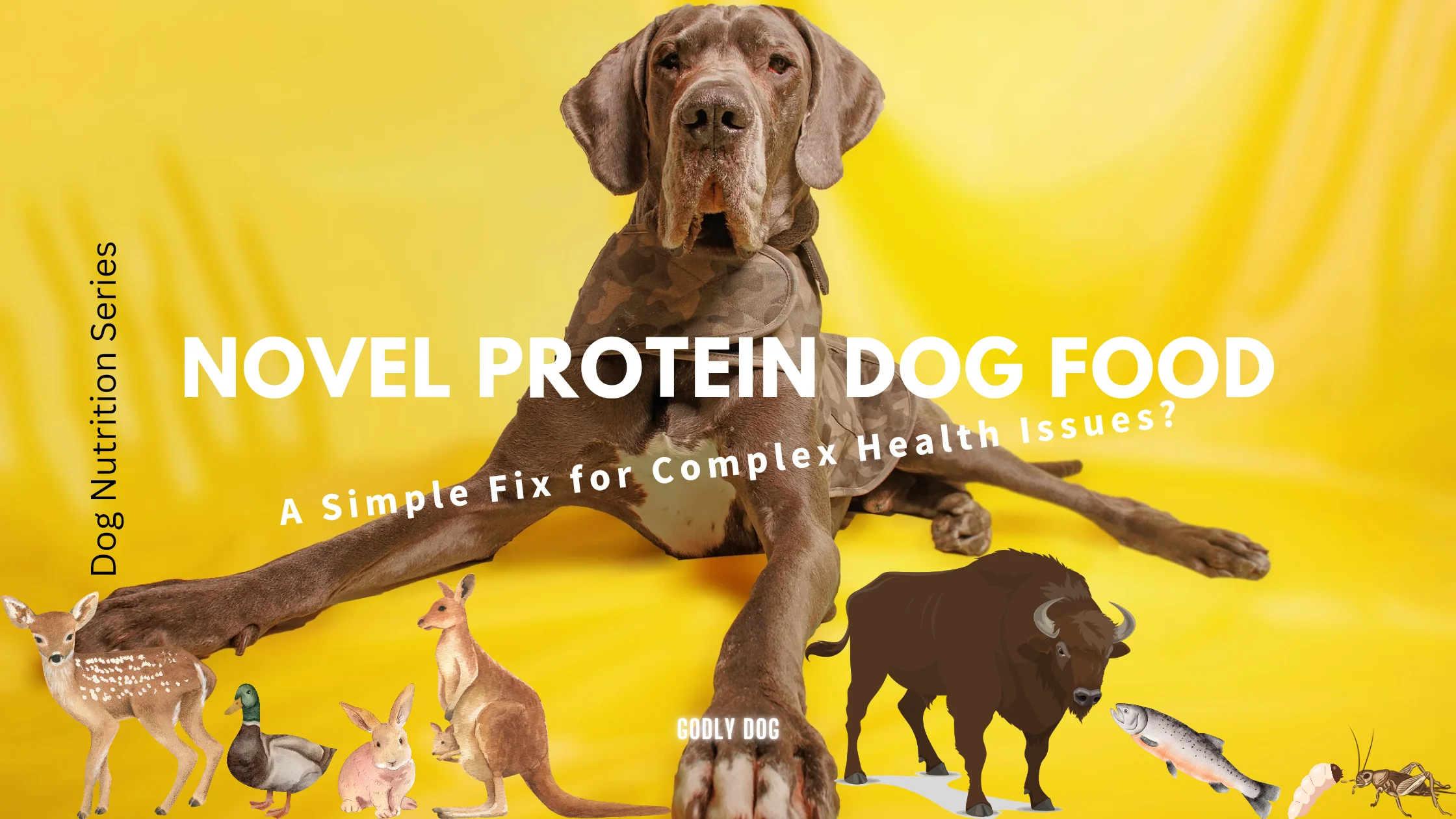Ketogenic Dog Food: Is the Keto Diet Right for Your Dog?

Move over bacon, your dog might be the next keto convert in the house.
You’ve heard about the ketogenic diet for humans—high fat, low carb, lots of avocados and confusion. But what about dogs? Is ketogenic dog food just a trendy gimmick, or could it actually be a health-boosting choice for your four-legged bestie?
The short answer: it depends on your dog, their health, and how committed you are to reading nutrition labels like a detective on a mission.
The keto diet for dogs is gaining traction for some surprisingly good reasons. From helping manage epilepsy and inflammation to supporting dogs with cancer and obesity, many pet parents (and even holistic vets) are exploring how low-carb, high-fat meals can improve canine health.
But before you swap out kibble for chicken thighs and coconut oil, it’s important to understand what keto really means in the dog world—and whether it’s the right move for your pup.
What Is Ketogenic Dog Food, Exactly?
Let’s break it down—without sounding like a biochemistry textbook.
A ketogenic diet for dogs is a high-fat, moderate-protein, and very low-carb way of feeding. The goal? To shift your dog’s metabolism from burning glucose (sugar/carbs) to burning fat for fuel. This fat-burning state is called ketosis, and it’s where the magic (or science) happens.
So, what goes into ketogenic dog food?
- ● 70–80% fat (Think: fish oil, beef fat, chicken skin, coconut oil)
- ● 15–25% protein (Muscle meat, organs—nothing too lean)
- ● 5–10% carbs (If any—just leafy greens or fibrous veggies)
In contrast, most commercial dog kibble is about 40–60% carbohydrates—loaded with rice, corn, potatoes, or peas. Even the “grain-free” ones can be sneaky carb bombs.
Keto-style dog food throws those fillers out the window. Instead, it focuses on clean, whole-food ingredients that promote fat metabolism and reduce inflammation. You can find some commercial ketogenic dog foods, but many pet parents opt to prepare keto dog meals at home—which gives you more control.
But here’s the kicker: unlike humans, dogs don’t need carbs to thrive. They’re what scientists call facultative carnivores, meaning they can digest carbs—but their bodies are really built for meat and fat.
So yes, the ketogenic diet for dogs isn’t just some trendy adaptation of your own weight loss plan. It’s rooted in how dogs are biologically wired to eat.
Why Would a Dog Need a Keto Diet?
Spoiler: It’s not to get beach-body ready for summer.
While the idea of your dog going keto might sound like you’re projecting your wellness goals onto your pup, there are legit medical and health-based reasons some dogs do better on a ketogenic diet.
Here are the most common reasons dogs are put on a keto diet:
1. Epilepsy (especially drug-resistant cases)
Research shows that ketogenic diets can reduce seizure frequency in dogs with epilepsy. It’s believed that ketones (the byproduct of burning fat) provide an alternate energy source for the brain, stabilizing neural activity. Yes—food as medicine is real.
2. Cancer support
Some cancers thrive on glucose. By removing carbs and fueling the body with fat, a keto diet may help “starve” certain types of cancer cells while nourishing the rest of the body. It’s not a cure, but it’s a dietary tool many holistic vets use alongside treatment.
3. Diabetes or insulin resistance
Since keto drastically cuts carbs, it may help stabilize blood sugar levels in diabetic dogs. But this requires close vet supervision—especially if your dog is on insulin.
4. Obesity and weight management
Keto can help your dog shed extra pounds without feeling deprived. Fat keeps dogs full longer, and with fewer blood sugar spikes from carbs, many dogs on keto naturally eat less and have more energy.
5. Allergies and inflammation
Many commercial dog foods contain grains or fillers that trigger skin issues or gut irritation. A clean, carb-free, high-fat diet can reduce inflammation and help reset your dog’s immune system—think less itching and more tail-wagging.
Bonus reason? Energy.
Some active dogs on a keto diet seem to have better stamina and steadier energy—no post-kibble crash here.
But again, and can’t stress this enough: not all dogs need or benefit from keto. It’s not the magical solution to every problem, and it’s definitely not a one-size-fits-all approach. But when used thoughtfully and with vet support, it can make a big difference.
Is Keto Safe for Dogs? (And Which Dogs Should Avoid It?)
Just because something is good for some dogs doesn’t mean it’s good for every dog. The same goes for the keto diet.
Yes, the keto diet can be safe for dogs—when done right.
Many dogs tolerate it well, especially when it’s introduced slowly and tailored to their needs. Ketogenic dog food can be a helpful tool for managing chronic health issues or optimizing overall wellness. But there are caveats.
Dogs who should not go keto without serious veterinary oversight:
1. Dogs with pancreatitis or a history of it
High-fat diets are a huge no-no here. Keto could make things worse—fast.
2. Dogs with liver disease
The liver plays a big role in metabolizing fats and producing ketones. If it’s compromised, a keto diet could add unnecessary stress.
3. Puppies (unless medically supervised)
Growing dogs have different nutritional needs. Restricting carbs too much could affect development unless a vet has a specific reason.
4. Senior dogs with kidney issues
Too much protein can strain aging kidneys, and some older dogs may not metabolize fats efficiently.
5. Pregnant or nursing dogs
Mama dogs need a balanced diet that supports both them and their pups—not experimental meal plans.
Other considerations before going keto:
- ● Cost: High-quality meats, oils, and supplements don’t come cheap.
- ● Time: Prepping keto meals can be a part-time job.
- ● Nutritional balance: Without proper planning, dogs can miss out on vital nutrients (like calcium, omega-3s, or B vitamins).
So, is keto safe for dogs?
Yes, for many—but not all. Talk to your vet or a canine nutritionist before flipping your dog’s food bowl upside down. Keto isn’t a casual diet—it’s a commitment.
What Can You Feed a Dog on a Keto Diet?
So, you’ve decided to put your pup on ketogenic dog food. No more carb-loaded kibbles, no more mystery “meat meal.” But now you’re staring at your fridge wondering: what do I feed then?
Relax. Here’s a breakdown of keto-friendly foods that are tail-wagging approved—and vet-nutritionist endorsed.
Proteins (but not too lean)
Moderate protein is key. Too much protein can kick your dog out of ketosis.
- ● Chicken thighs (with skin!)
- ● Beef (preferably 80/20)
- ● Turkey necks or wings
- ● Pork shoulder
- ● Liver and organs (in moderation—nutrient dense but rich)
- ● Sardines, mackerel, or salmon (great for omega-3s)
Healthy Fats (the real stars of the show)
Fat fuels ketosis. It also makes meals delicious—even to picky eaters.
- ● Coconut oil
- ● Fish oil
- ● Beef or pork fat (tallow)
- ● Chicken skin and fat
- ● Egg yolks
- ● Ghee or unsalted butter (in small amounts)
Low-carb vegetables (fiber + nutrients)
These keep digestion happy without spiking carbs.
- ● Spinach
- ● Kale
- ● Zucchini
- ● Cauliflower
- ● Broccoli
- ● Cucumber
- ● Green beans
Chop or lightly steam them—dogs aren’t great at digesting raw veggies. Bonus points for blending them.
Supplements You May Need
Keto diets often need a little help to stay balanced.
- ● Calcium (especially if you’re not feeding raw meaty bones)
- ● Omega-3s (fish oil or krill oil)
- ● Digestive enzymes or probiotics
- ● Multivitamins tailored for dogs on homemade diets
Things to skip (strictly non-keto)
- ● Rice, pasta, potatoes
- ● Grains (wheat, corn, oats)
- ● Fruit (most are sugar bombs)
- ● Store-bought treats (unless keto-specific)
- ● Anything with “flavorings,” preservatives, or “meal” as the main ingredient
Pro tip: Track your dog’s macros! Use apps or spreadsheets to make sure you’re hitting the fat-protein-carb ratio (typically 70-80% fat, 20-25% protein, 5-10% carbs).
How Do You Transition a Dog to a Keto Diet?
Spoiler alert: You don’t just wake up one day, toss the kibble, and serve your dog a ribeye.
Switching your pup to a ketogenic diet takes planning, patience, and probably a calculator. Sudden diet changes can upset your dog’s tummy—and no one wants surprise diarrhea on the rug.
Step-by-step guide to transitioning your dog to keto (without chaos):
1. Start slow
Begin by mixing a small amount of keto-friendly food into your dog’s regular meals. Gradually increase the keto portion over 7–10 days while reducing the old food. Watch for signs of digestive upset like gas, soft stools, or refusal to eat.
2. Track macros
Dogs on keto need about 70–80% fat, 15–25% protein, and 5–10% carbs (by calories, not weight). Tools like Raw Fed & Nerdy or PetDietDesigner can help you calculate the right ratios for your dog’s breed, size, age and health condition.
3. Hydration is key
Fat metabolism produces less water than carbs, so make sure your dog drinks plenty. You can also add bone broth or extra moisture to meals.
4. Monitor ketone levels (optional but cool)
Yes, you can test your dog’s urine or blood for ketones using pet-safe test strips or a meter. It’s not required, but it’s a fun (and geeky) way to know if your pup is actually in ketosis.
5. Don’t forget supplements
Homemade keto meals can be low in certain nutrients. Add a balanced multivitamin, calcium source (like ground eggshells or bone meal), and omega-3s to avoid deficiencies.
6. Keep your vet in the loop
Especially if your dog has health issues. Vets can help adjust meds, monitor weight changes, and keep an eye on long-term effects.
Transitioning timeline tip:
- ● Days 1–3: 25% keto, 75% old food
- ● Days 4–6: 50/50 mix
- ● Days 7–9: 75% keto, 25% old food
- ● Day 10 onward: 100% keto
If your dog refuses the food or shows signs of distress, slow down the process. Every dog adjusts differently—some sprint into keto, others need to wade in paw by paw.
What Are the Benefits of a Ketogenic Diet for Dogs?
You’ve heard the hype—now let’s break down the real, science-backed, tail-wagging benefits of ketogenic dog food. Spoiler: it’s not just about “being trendy” or giving your dog bacon for breakfast.
1. Better brain health (especially for epileptic dogs)
One of the most compelling reasons for canine keto? Seizure control. Studies have shown that keto diets can reduce the frequency and severity of seizures in dogs with epilepsy—especially those that don’t respond well to meds. It’s all about the brain using ketones instead of glucose for more stable energy.
2. Potential cancer support
Many cancer cells rely on sugar to grow. Since keto minimizes glucose and ups fat, it may help slow tumor growth in some cancers. While it’s not a cure, it’s often used as part of an integrative treatment plan with promising results.
3. More stable energy and mood
Without the sugar spikes and crashes from carb-heavy diets, many dogs on keto seem calmer, more focused, and consistently energetic. Great for working breeds or anxious pups who need a bit more zen.
4. Improved skin and coat
High-quality fats = healthy skin and a shiny coat. Dogs with allergies or chronic skin issues often see major improvements on keto, especially when common allergens (like grains or fillers) are removed.
5. Weight loss without starvation
Fat is filling. On keto, dogs tend to feel satisfied while still losing excess weight. It helps regulate appetite hormones and reduces unnecessary snacking or begging.
6. Reduced inflammation
Low-carb, high-fat diets are naturally anti-inflammatory. For dogs with arthritis, IBD, or chronic joint issues, keto may help ease pain and stiffness—giving them more zoomies and fewer limpies.
7. Better poop (yep, we went there)
Less filler = less poop. Many keto-fed dogs have smaller, firmer, less frequent bowel movements. And that’s a win for everyone.
Are There Any Risks or Side Effects of Feeding Keto Dog Food?
Okay, time for some real talk: ketogenic dog food isn’t magic fairy dust. While it can be amazing, it’s not without potential bumps in the road (or in your dog’s gut). Let’s chew on the risks and side effects—because an informed dog parent is a smart one.
1. Tummy troubles during transition
When you switch from carb-heavy kibble to fat-forward meals, expect some digestive drama. Think gas, loose stools, or even a temporary dip in appetite. It’s normal—your dog’s gut microbiome is adjusting.
Fix it: Go slow. Like, “your dog might roll their eyes” slow. Gradual transitions help minimize side effects.
2. Nutritional imbalances
DIY keto without a plan? Big no-no. Dogs still need a balanced mix of vitamins, minerals, and fiber—even if carbs are low.
Fix it: Use dog-specific supplements, include organ meats, and consider professional meal plans. Nutritional gaps sneak in easily on homemade keto.
3. High-fat overload for sensitive pups
Too much fat too fast can trigger pancreatitis, a painful and dangerous condition. If your dog’s a small breed, senior, or already has a sensitive stomach, go easy.
Fix it: Choose healthy fats (think omega-3s) and keep an eye on portion sizes. Consult your vet if you’re unsure.
4. Bad breath (aka “ketosis kisses”)
Yep—just like humans on keto, dogs may develop fruity, metallic breath when in ketosis. It’s not harmful, but it can be… intense.
Fix it: Fresh water, parsley treats, and dental chews help tone it down.
5. It’s not a one-size-fits-all diet
Some dogs simply don’t thrive on keto. Their energy may dip, they might lose too much weight, or they just won’t eat it. That’s okay—not every pup’s a keto pup.
Fix it: Be flexible. Monitor weight, mood, coat, and energy. If things go downhill, keto may not be the right fit.
How to Choose the Best Ketogenic Dog Food (Homemade vs Store-Bought)
So now you’re all in on keto for your dog. But the big question hits: Do I cook this myself or just buy something off the shelf and hope for the best?
Here’s a snout-to-tail comparison to help you pick the right path (or blend both).
Homemade Keto Dog Food: The Pros & Cons
Pros:
- ● Total control over ingredients
- ● Great for dogs with allergies or sensitivities
- ● You can tailor the fat-protein-carb ratio precisely
- ● More cost-effective in the long run (usually)
Cons:
- ● Time-consuming (you’ll become your dog’s private chef)
- ● Requires planning and precise nutrient balance
- ● Easier to mess up (nutritional imbalances sneak in fast)
- ● You’ll need to weigh food, track macros, and maybe even use spreadsheets (yes, dog food math is a thing)
Best for: Passionate DIYers, dogs with special needs, or pawrents who love playing canine nutritionist.
Store-Bought Keto Dog Food: The Good and the “Read-the-Label”
Pros:
- ● Convenient and consistent
- ● Balanced formulas designed by nutritionists
- ● Some offer freeze-dried or raw options
- ● Many include supplements and organ meats
Cons:
- ● Not all “low-carb” foods are truly ketogenic
- ● Often pricey (like “gourmet coffee” pricey)
- ● Some contain sneaky starches or fillers
- ● Harder to customize for specific conditions
Best for: Busy pup parents, keto newbies, or dogs who thrive on ready-made options.
What to Look for in Store-Bought Keto Dog Food:
- ● Fat content around 60–80% of calories
- ● Moderate protein (not excessive)
- ● Carb content under 10%
- ● No grains, starches, or mystery meals
- ● Clear sourcing (bonus if it lists organ meats)
Or maybe Mix It Up
Some pet parents do a combo: store-bought base + homemade add-ins (like raw egg, sardines, or bone broth). That way, you get convenience and customization.

Srijana, founder of Godly Dog, brings 12+ years of experience caring for dogs, including her 6 fur kids: a Labrador, 2 Spitz, and 3 Indie rescues. She has studied natural dog nutrition and behavior to better understand and care for them. A passionate advocate for strays and a dedicated volunteer, she believes dogs embody godliness, inspiring unconditional love and selflessness. Through Godly Dog, she shares practical advice to ensure every dog gets the love, care, and respect they deserve.



